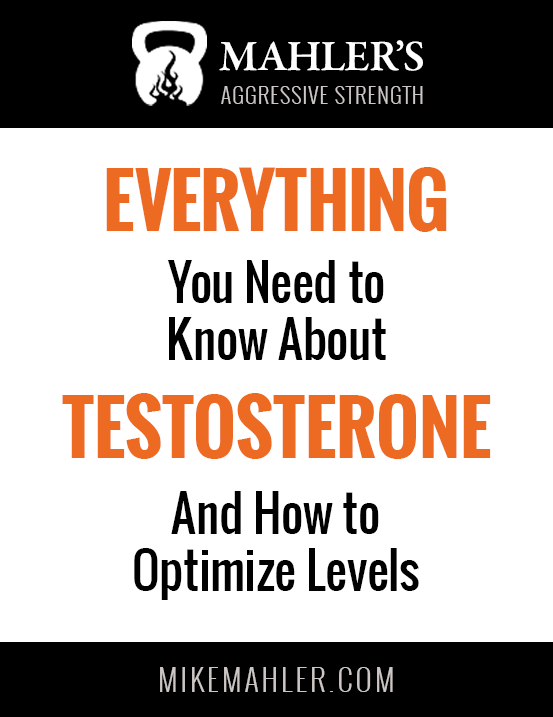By Josh Henkin
Let’s face it, fat loss is generally a primary goal for many programs. Athlete or non-athlete alike, people would like to be leaner, stronger, and more athletic. However, if there is one thing popular media promotes and most people desire is that lean athletic body.
Often though we are led to believe that strength training and fat loss don’t work together. I have heard coaches and trainers tell their clients to perform “cardio” as the best method of losing fat. Generally this includes what is known as long duration, low intensity exercise. An example would include performing a 50% effort on a treadmill for a duration of 45 minutes.
For years this has been the preferred method of fat loss. The concept is that a larger percentage of calories burned are derived from fat calories. What if I said there is another, more effective method? There is something better, it is known as HIIT (high intensity intermittent training).
HIIT at first may seem like an infomercial, less time, better results. The science behind HIIT training is very strong. What researchers are realizing is the post-exercise recovery period may be extremely influential on the overall outcome of a training program. To lose bodyfat, it is more important to take into account the overall calories expended rather than the amount utilized from fat (1). In fact, a study performed by Tremblay et al (3), examined the difference of endurance training (ET) and high-intensity intermittent-training (HIIT). The endurance group performed their training for 20 weeks and burned an average of 120.4MJ per session. The HIIT group performed their program for 15 weeks with an average expenditure of 57.9MJ per session. In other words, the ET group burned more energy during their training sessions. However, the result of six subcutaneous skinfolds showed the HIIT group lost significantly more bodyfat. There has to be something happening to the body beyond simple caloric expenditure.
What? You say this is one study and that can tell us everything! Fine, here is a couple more. Research by Hickson et al (4), Pacheco-Sanchez et al (5), Bryner et al (6), all demonstrated higher bodyfat loss from the high-intensity groups than the lower-intensity groups. This is extremely interesting considering the past theory that by working at a lower intensity you will burn more bodyfat. Even weight training has been shown to be very productive in losing bodyfat. Kraemer et al (7) studied the effects of three different groups, diet, diet and aerobics, and diet, aerobics, and weight training. The result? Simple, the group that performed all three programs lost TWICE times as much bodyfat, but the same amount of weight as the aerobics and diet group. This is important because this demonstrates that anaerobic training will spare more lean tissue, which in turn will keep metabolism elevated and make one look overall better. When people generally lose a lot of muscle mass they tend to look soft and flabby, just look at the average aerobics instructor.
It doesn’t take long to start to wonder if we could achieve all of our fitness goals within one training program. We could utilize the principles of interval training within an amazing interval strength training system. This would help us increase functional muscle mass, increase metabolism, raise endurance, and improve our athleticism. There are a few keys:
- You must choose full body lifts to stimulate similar training effects, no biceps curls!
- Keep the rest intervals short, generally 30-60 seconds
- Work sets should last a minimum of 15 seconds
Here are a few examples using my three favorite training methods, kettlebells, sandbags, and bodyweight drills.
Workout 1:
Kettlebell Squat & Press
Sandbag Alternating Shouldering
Modified Pull-ups
Kettlebell Get-up Sit-up
Workout 2:
Sandbag Clean and Press
Kettlebell Tactical Lunges
Hindu Push-ups
Planks
Workout 3:
Sandbag Zercher Squat
Kettlebell Right Hand Snatch
Kettlebell Left Hand Snatch
Kettlebell Renegade Rows
Sandbag Around the World
Workout 4:
Sandbag Squat Thrust & Snatch
Kettlebell Step-ups
Chin-ups
Sandbag Shoulder Right Get-up
Sandbag Shoulder Left Get-up
References
1. Coyle, E.H. Fat Metabolism During Exercise. [Online] Gatorade Sports Science Institute. 1999, March 25.
2. Ballor, D.L., J.P. McCarthy, and E.J. Wilterdink. Exercise Intensity Does Not Affect the Composition of Diet- and Exercise- Induced Body Mass Loss. Am. J. Clin. Nutr. 51:142-146, 1990.
3. Tremblay, A., J. Simoneau, and C. Bouchard, Impact of Exercise Intensity on Body Fatness and Skeletal Muscle Metabolism. Metabolism.43:814-818, 1994.
4. Hickson, R.C., W.W. Heusner, W.D. Van Huss, D.E. Jackson, D.A. Anderson, D.A. Jones, and A.T. Psaledas. Effects of Dianabol and High-intensity Sprint Training on Body Composition of Rats. Med. Sci. Sports and Exercise. 8:191-195, 1976.
5. Pacheco-Sanchez, M., and K.K. Grunewald. Bodyfat Deposition: Effects of Dietary Fat and Two Exercise Protocols. J. Am. Col. Nutr. 13:601-607, 1994.
6. Bryner, R.W., R.C. Toffle, I.H. Ullrish, and R.A. Yeater. The Effects of Exercise Intensity on Body Composition, Weight Loss, and Dietary Composition in Women. J. Am. Col. Nutr. 16:68-73, 1997.
7. Kraemer, W.J., et al. Influence of Exercise Training on Physiological and Performance Changes with Weight Loss in Men. Med. Sci. Sports and Exercise. 31:1320-1329, 1999.
Josh has dedicated himself to providing cutting edge, easy to apply training information to the masses. He has created the Ultimate Sandbag for those who wish to get the immense benefits of odd object lifting at home or in their gym as well as the very popular High Octane Sandbag Training DVD. He has also recently released SMASH: Total Conditioning with Sledgehammers. These programs have become so popular because they are effective and fun! Check out Josh’s sites at www.ifsstrength.com and www.sandbagexercises.com

